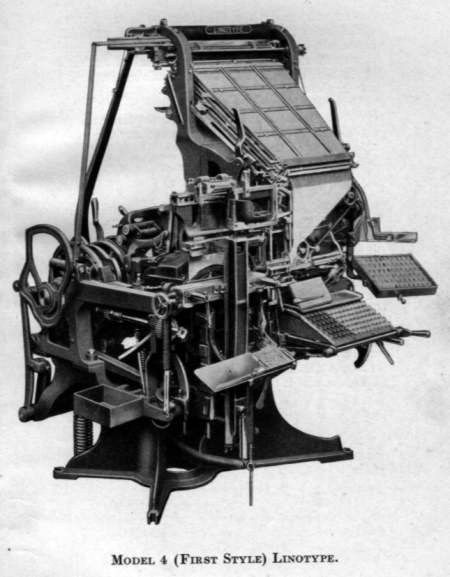
This model increased the capacity of the Linotype machine, enabled the operator to effect a quick change from one magazine to another, and from one mould to another, without getting off his chair, and provided a composing machine suitable for general jobbing as well as the newspaper printer.
With three magazines in position, each charged with double-letter matrices, and with the necessary moulds in the mould wheel, this model was capable of turning out work of varied character at the highest possible speed.
Each fount of matrices supplied with this machine comprised 180 characters, or five alphabets, with the necessary figures, points, etc., and the full capacity of the three magazines therefore provided a maximum of 540 characters in each complete equipment. [Ed.-That’s what it says.]
For newspaper headlines special magazines could be arranged, providing as many as eight alphabets of caps and two complete body founts of roman and black letter, or a total of 12 faces or 16 alphabets, all of them available from one keyboard for immediate use.
This model could be supplied either as a simplex or duplex, or triplex–that is, it could be equipped with one, two, or three magazines as the purchaser required.
If installed at first as a simplex, further equipment could be obtained subsequently and added to the machine at any time. As regards the other parts of the machine, the improvements were practically identical with Models 2 and 3. The machine produced all sizes of type faces from 5-point up to 14-point, in all measures up to 30 pica ems.
“This style of Model 4 is no longer built.”
Linotype fan? Don’t miss the Linotype Chat section of the Metal Type Forum.